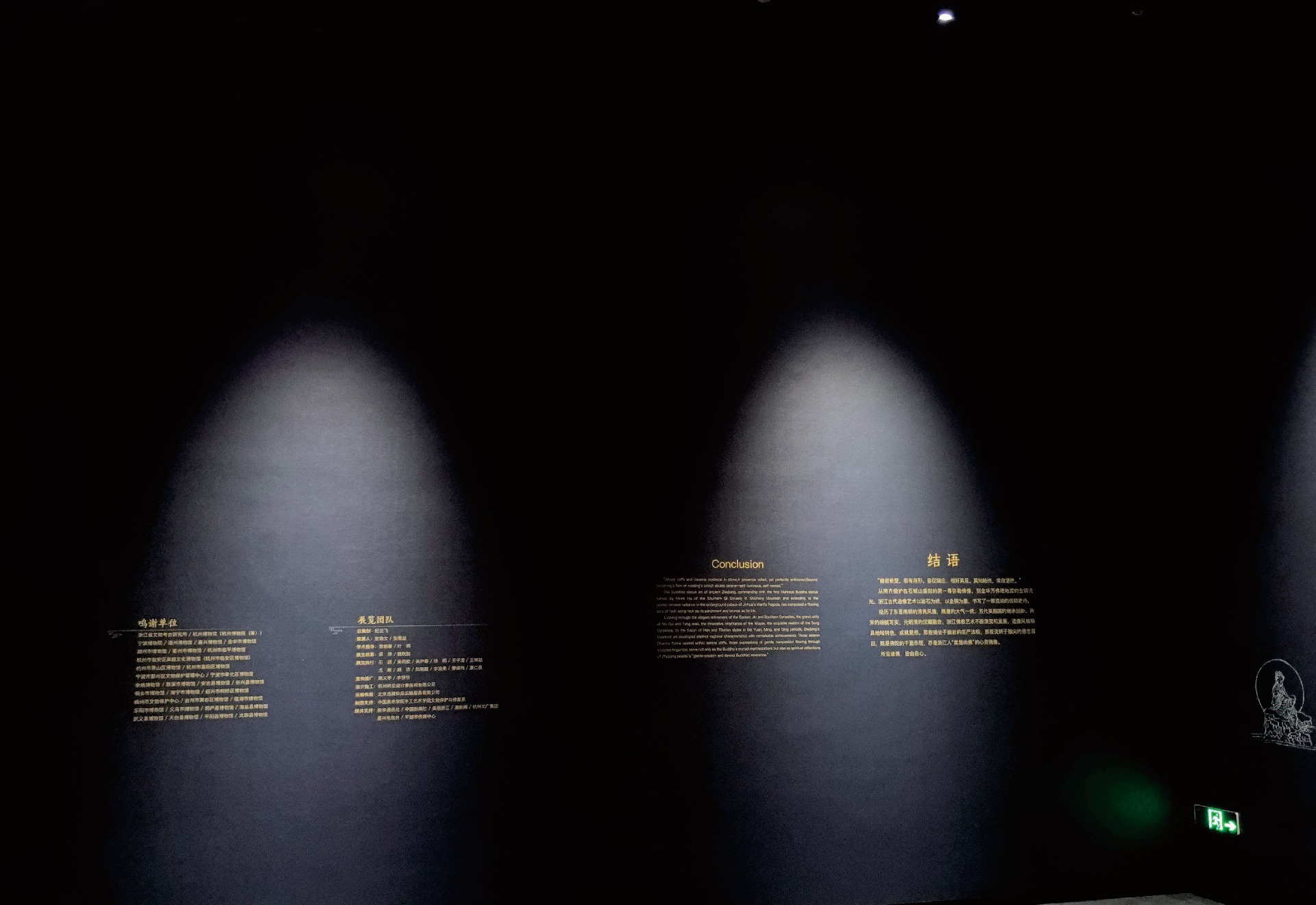
The exhibition takes the gold and copper statues unearthed from pagodas all over Zhejiang as its main line, supplemented by statues in stone carvings, clay sculptures, gold and silver, ceramics, wood carvings, jade carvings, as well as statues of Buddha in sutra scrolls and paintings, with a total of 180 pieces (groups) of exhibits. These exhibits cover various periods from the Three Kingdoms to the Ming and Qing Dynasties, demonstrating the evolution and development of the ancient art of statuary in Zhejiang. The exhibition is divided into four units according to the chronological order, namely, the Three Kingdoms to the Sui and Tang dynasties, the Wu-Yue period of the Five Dynasties, the two Song dynasties and the Yuan, Ming and Qing dynasties. The first unit, “Buddha's Shadow and Spirit - Three Kingdoms to Sui and Tang Dynasties”, displays the art of statuary from the Three Kingdoms and the Sui and Tang Dynasties, reflecting the introduction and initial development of Buddhism during this period. The second unit “Buddha shadow Cham Ran - Five Dynasties Wu Yue period”: focuses on the Five Dynasties Wu Yue Buddhist statues, especially the kings of the Qian's respect for Buddhism and the prosperity of the art of statues. The third unit “Buddha's Shadow Transmits the Heart - the two Song dynasty”: shows the secularization of Buddhist art in the two Song dynasty and the trend of living, as well as the integration of Confucianism and Buddhist culture. Unit 4: “The Shadow of Buddha can be seen - Yuan, Ming and Qing Dynasties”: reflects the integration of Chinese and Tibetan Buddhist art and the prevalence of Pure Land beliefs in the Yuan, Ming and Qing Dynasties.
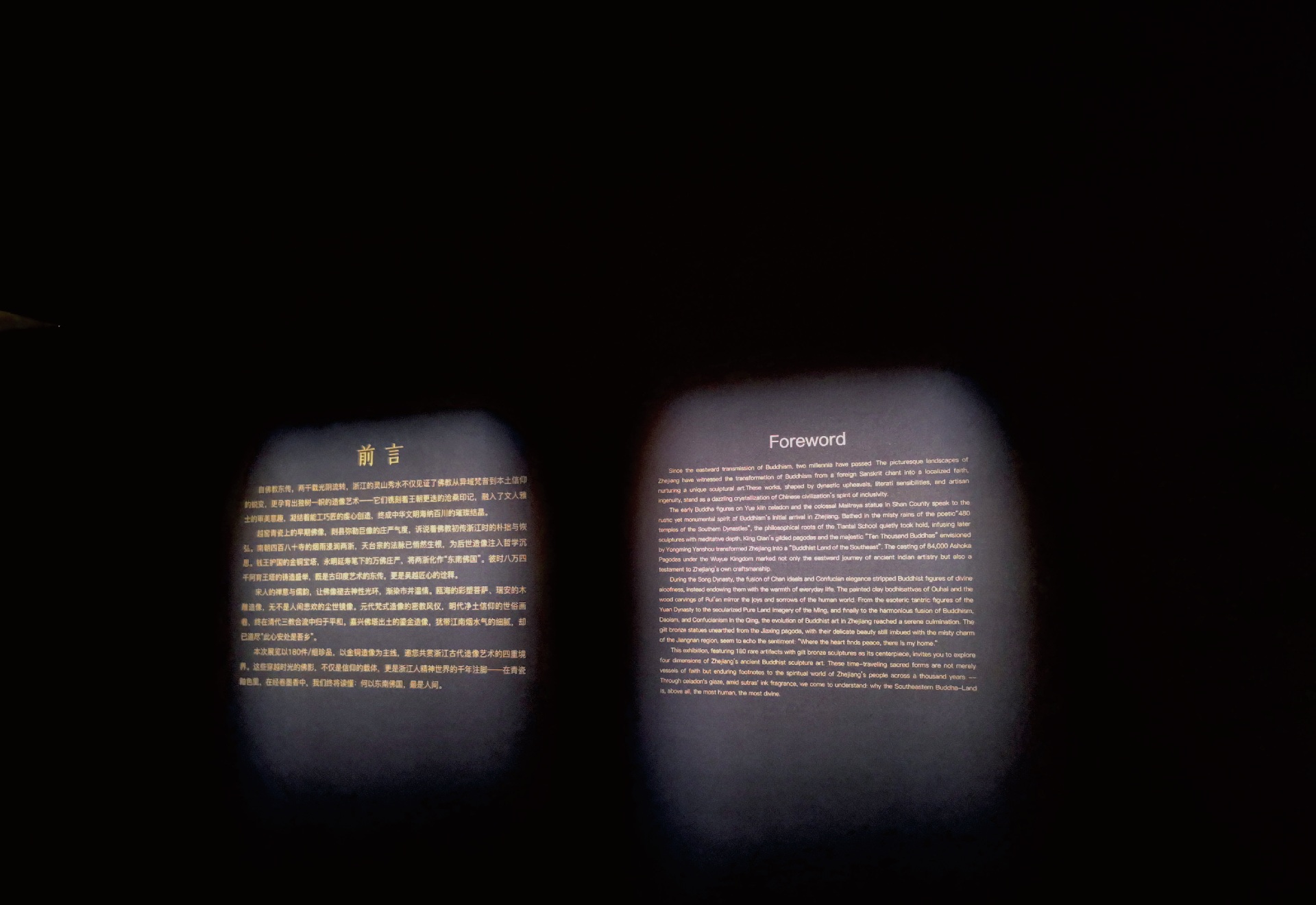
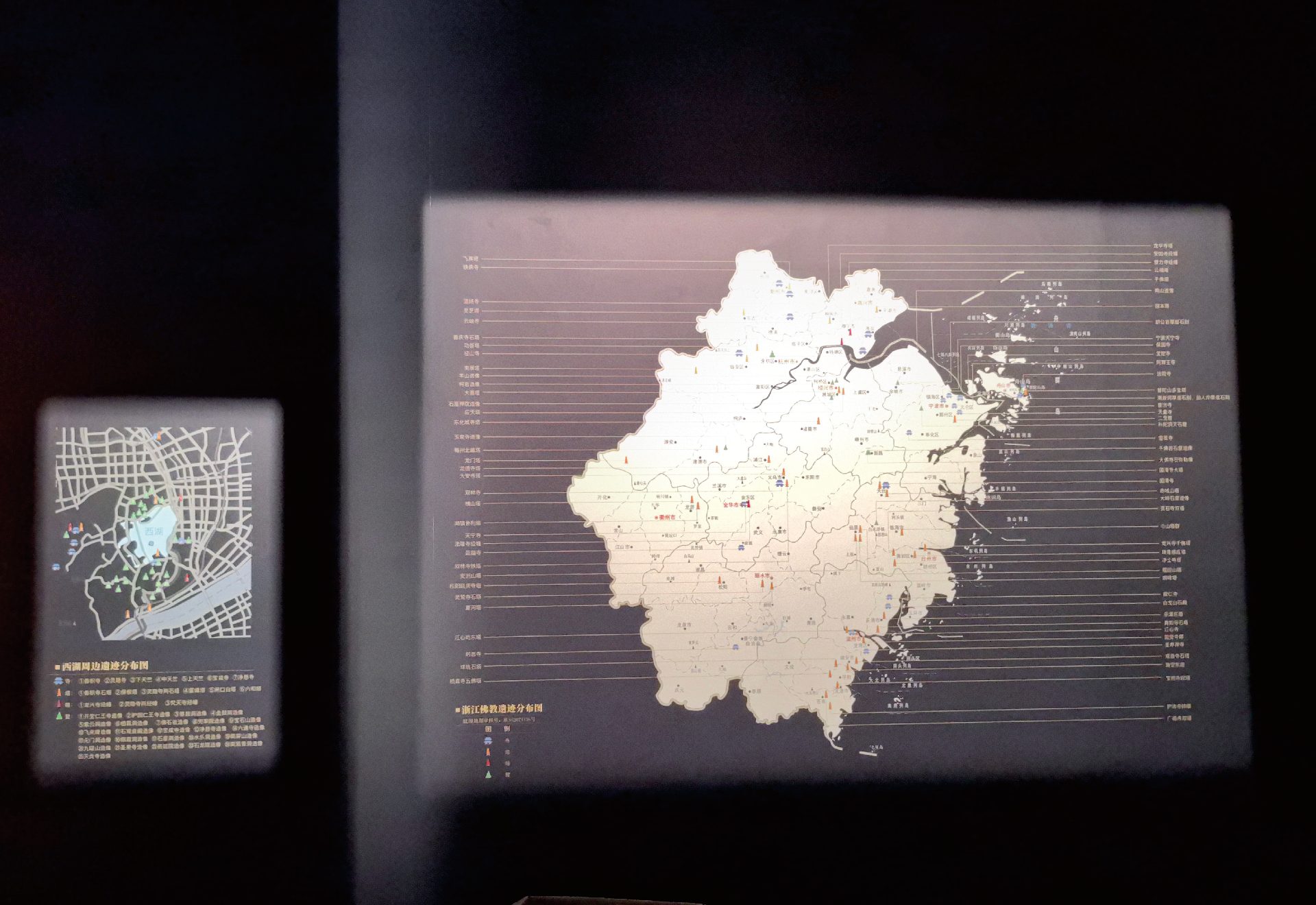
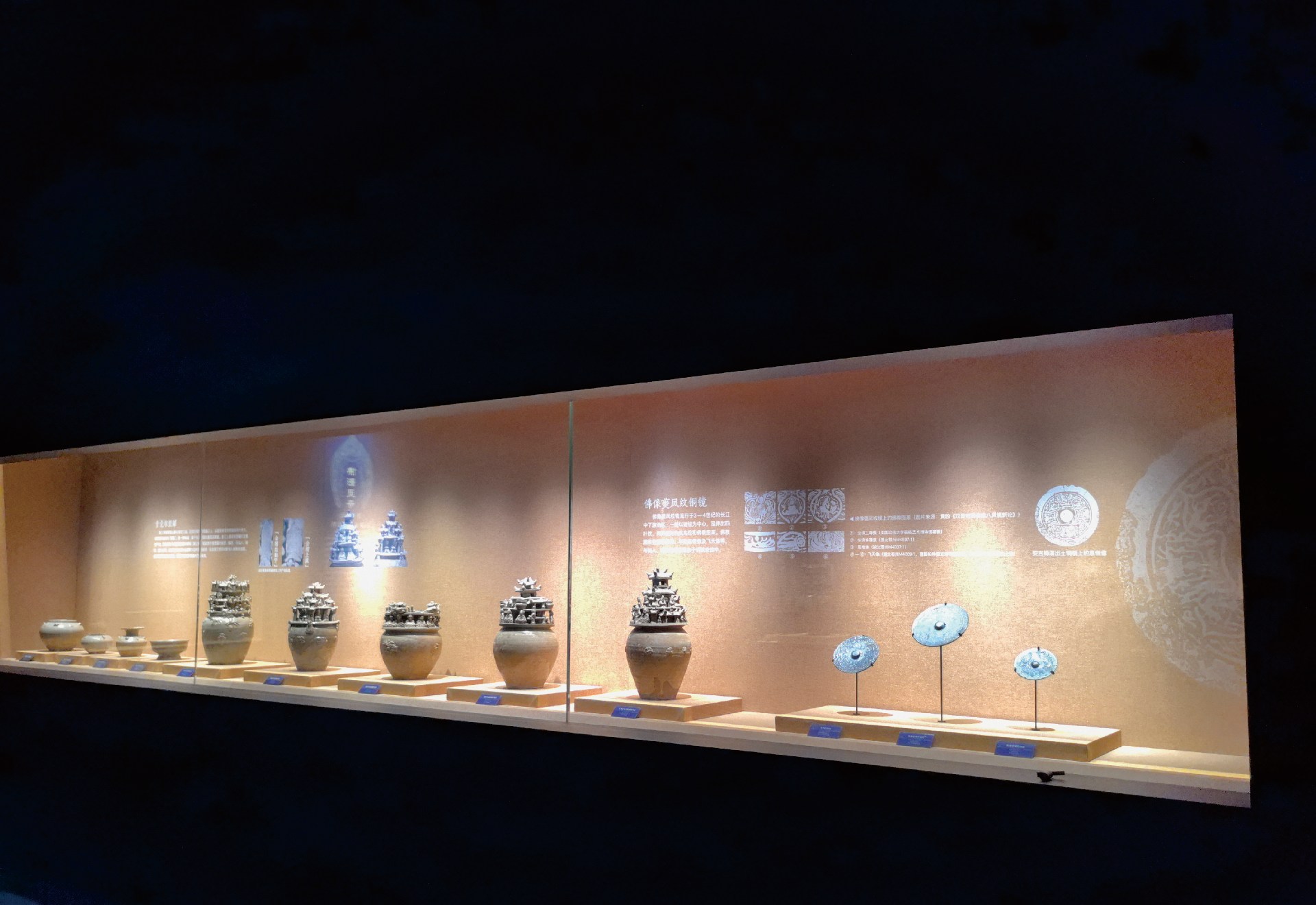
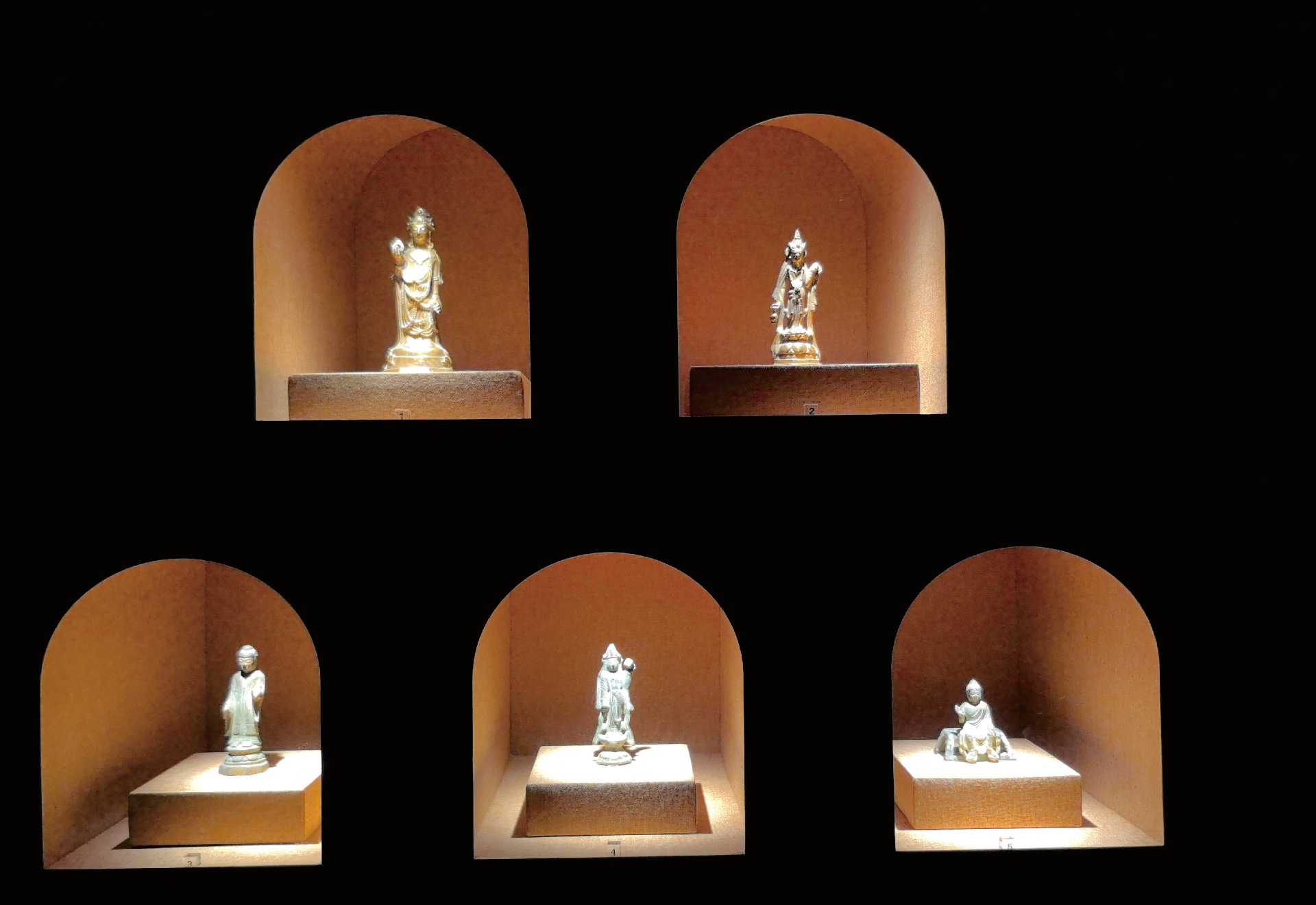
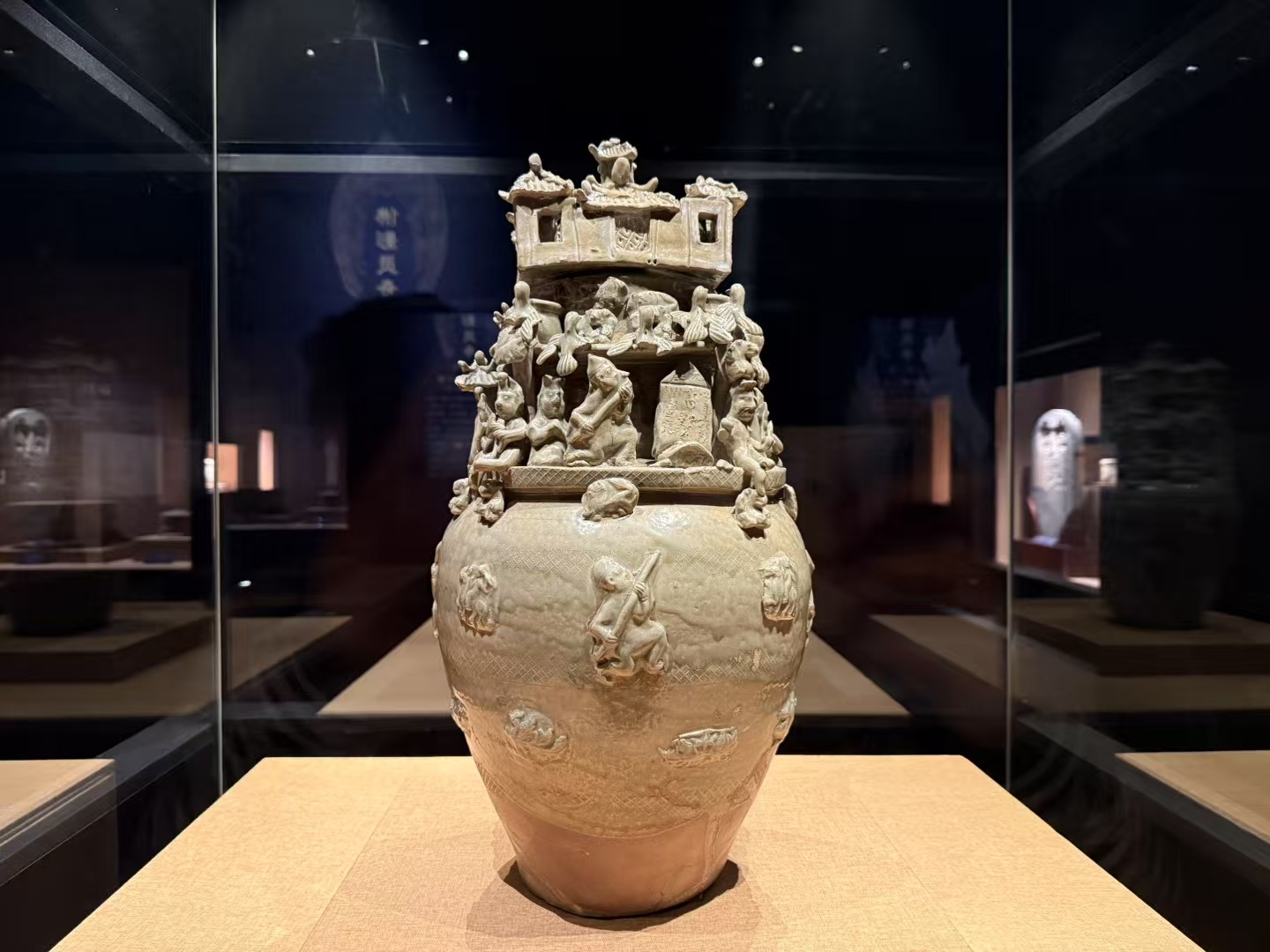
The exhibition hall focuses on a number of Yue kiln celadon stacked jars, which evolved from the plain five-link jars of the Eastern Han Dynasty, also known as “soul bottles”, a kind of Ming ware. Can be seen in the stacked jar, Buddha or located on the top of the stacked jar between the pavilion door, or appliquéd in the stacked jar shoulder, abdomen, and immortals, beasts, hu man, reflecting the Jiangnan scholar-landlords, bureaucrats and aristocrats at the time of the rich and noble desire for pleasure and the pursuit of immortality.

In the exhibition hall, the most attractive to the audience's attention, is the Dongyang Zhongxing Temple Pagoda unearthed in Dongyang City Museum collection of “three catty thirteen taels” inscription gilt-bronze Ashoka Pagoda. “It can be said that this is the Leifeng Pagoda underground palace excavated Ashoka Pagoda lost 1,000 years of siblings.” Wei Zhuting, deputy director of the Zhejiang Provincial Museum's Wuyue Historical and Cultural Research and Exhibition Center, joked. According to him, this Ashoka Pagoda and the Ashoka Pagoda unearthed from the Leifeng Pagoda's underground palace are very similar in size and appearance, "In fact, they both mimic the national treasure of the Wu-Yue State at that time, the Ashoka Pagoda of the Ashoka Temple in Ningbo. The pagoda is 1 feet 4 inches high and 7 inches square, with a hollowed out body, decorated with stories of the Buddha's birth on all sides, and the corners of the top of the pagoda are decorated with mountain flowers and banana leaves and stories of the Buddha's biography. The whole shape, like the Ashoka Pagoda found in Leifeng Pagoda, is the closest to the Ashoka Pagoda in Ningbo. However, it is a bit different, “three pounds and thirteen taels” inscription gilt copper Ashoka Pagoda, or Wu Yue folk casting.


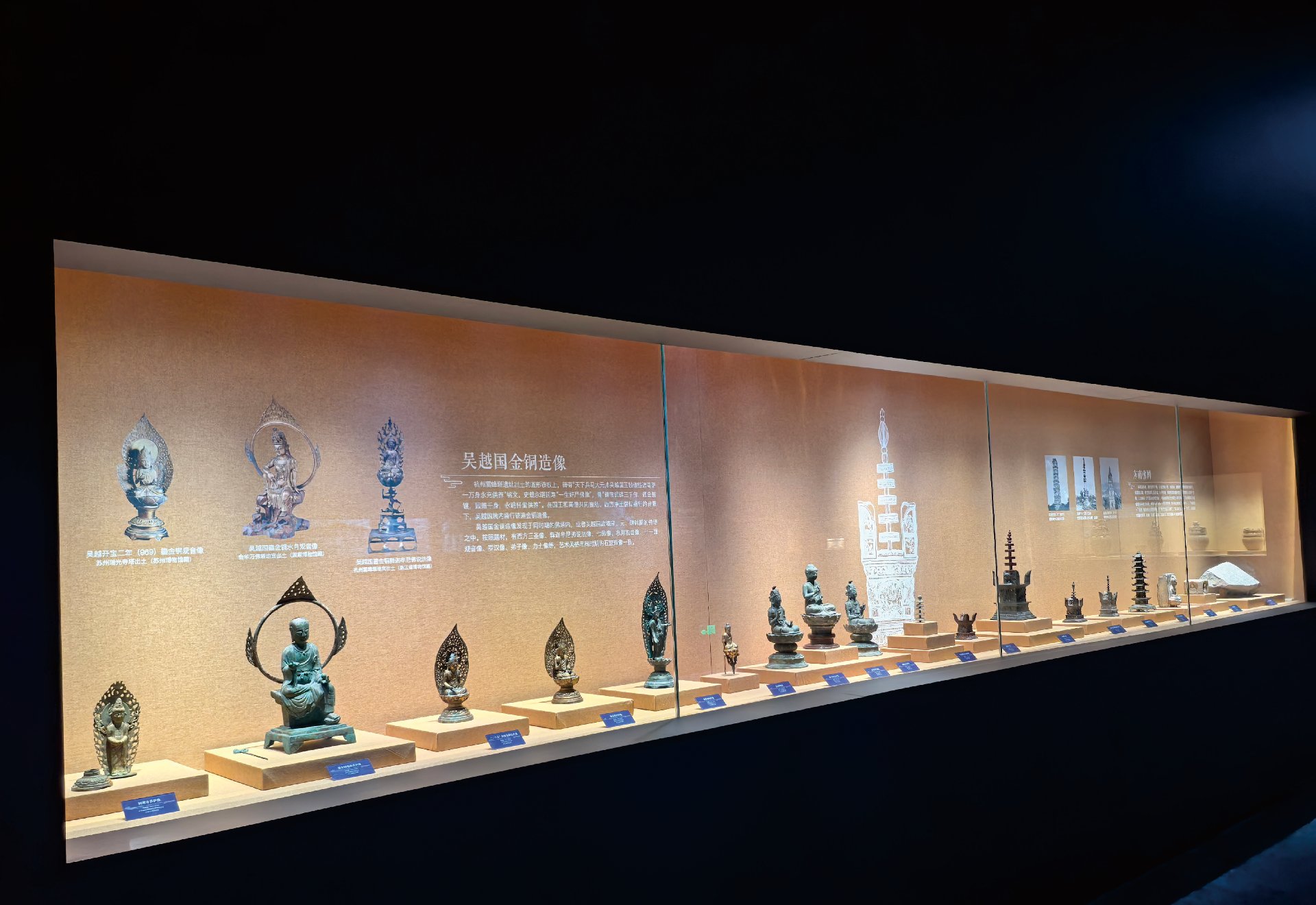
Buddhism was introduced to China from India, and the ancient Yue land in Zhejiang Province became an important discovery site for early Buddhist relics. During the Five Dynasties and Ten Kingdoms period, Wuyue was known as the “Southeast Buddhist Kingdom”, with a strong Buddhist atmosphere and a rich variety of Buddhist relics such as gold and bronze statues. The Buddhist thought and art of Wu-Yue State were newly created and developed, forming a unique artistic style. After entering the Song Dynasty, Chinese Buddhism became more localized and secularized, and Tibetan Buddhist statues became the mainstream in the Ming and Qing Dynasties. The Buddha of Wuyue for the splendor of Buddhist art in the Central Plains, history and art of the node of the object has become a collection of good investment.
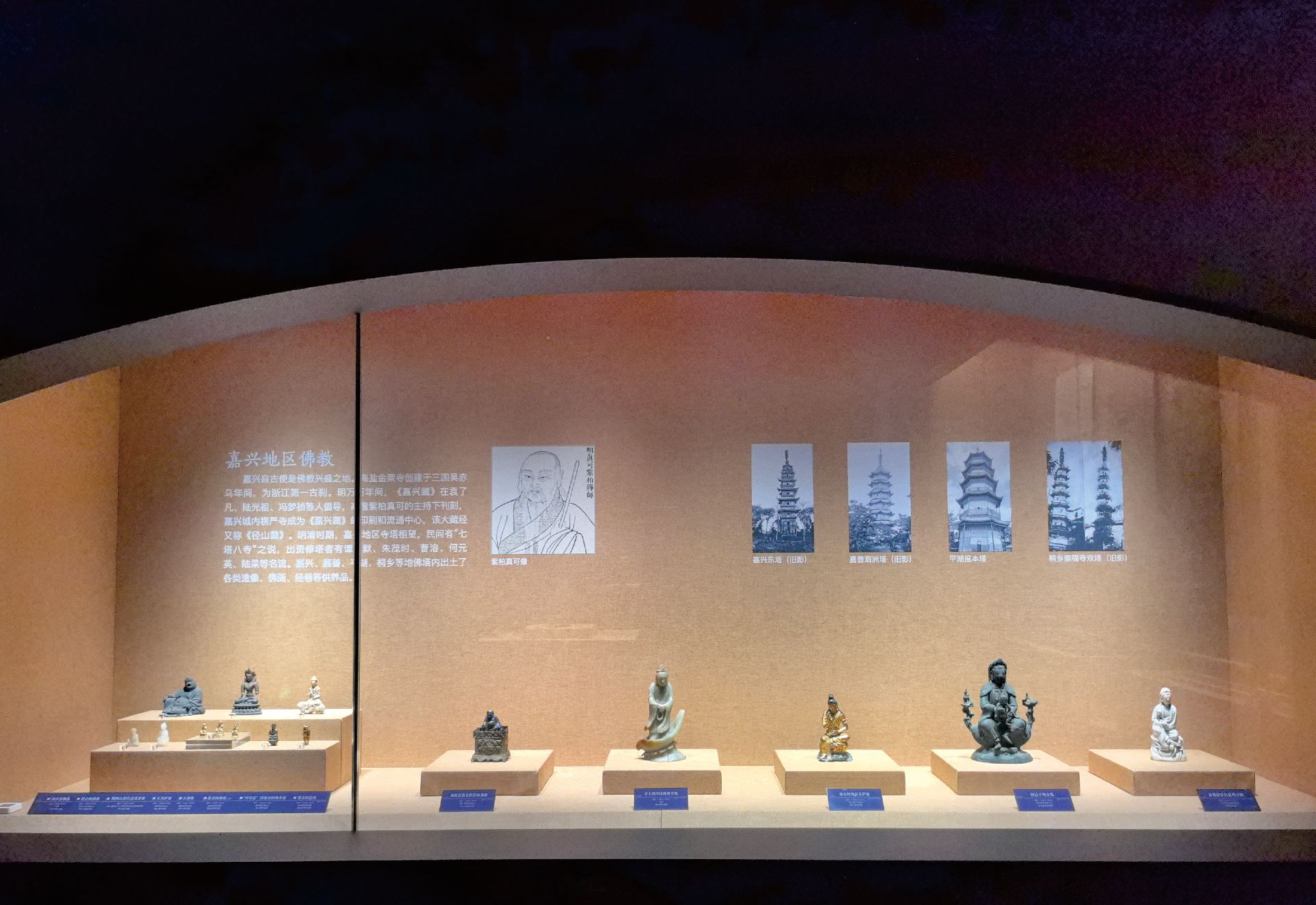

In Buddhism, raising a stupa for offering has an important symbolic meaning and practical role, which is not only respecting and offering to the Buddha's relics, but also the embodiment of Buddhist faith. By building stupas, believers are able to gain merits and blessings, which help them to cultivate and realize the Buddha's path. In addition, the raising of stupa offerings also symbolizes the inheritance and continuation of Buddhist beliefs, reflecting the deep-rootedness of Buddhist culture.
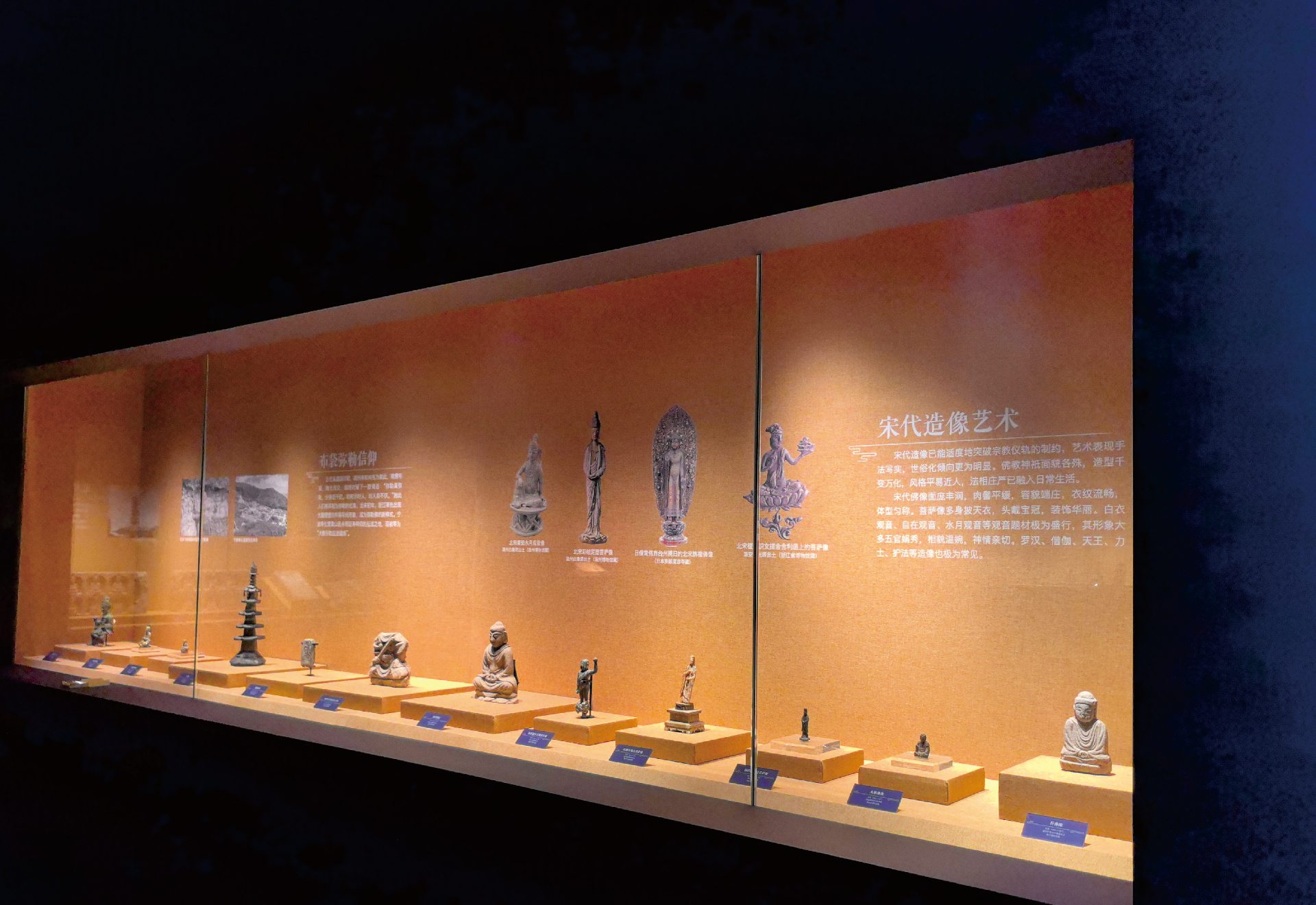
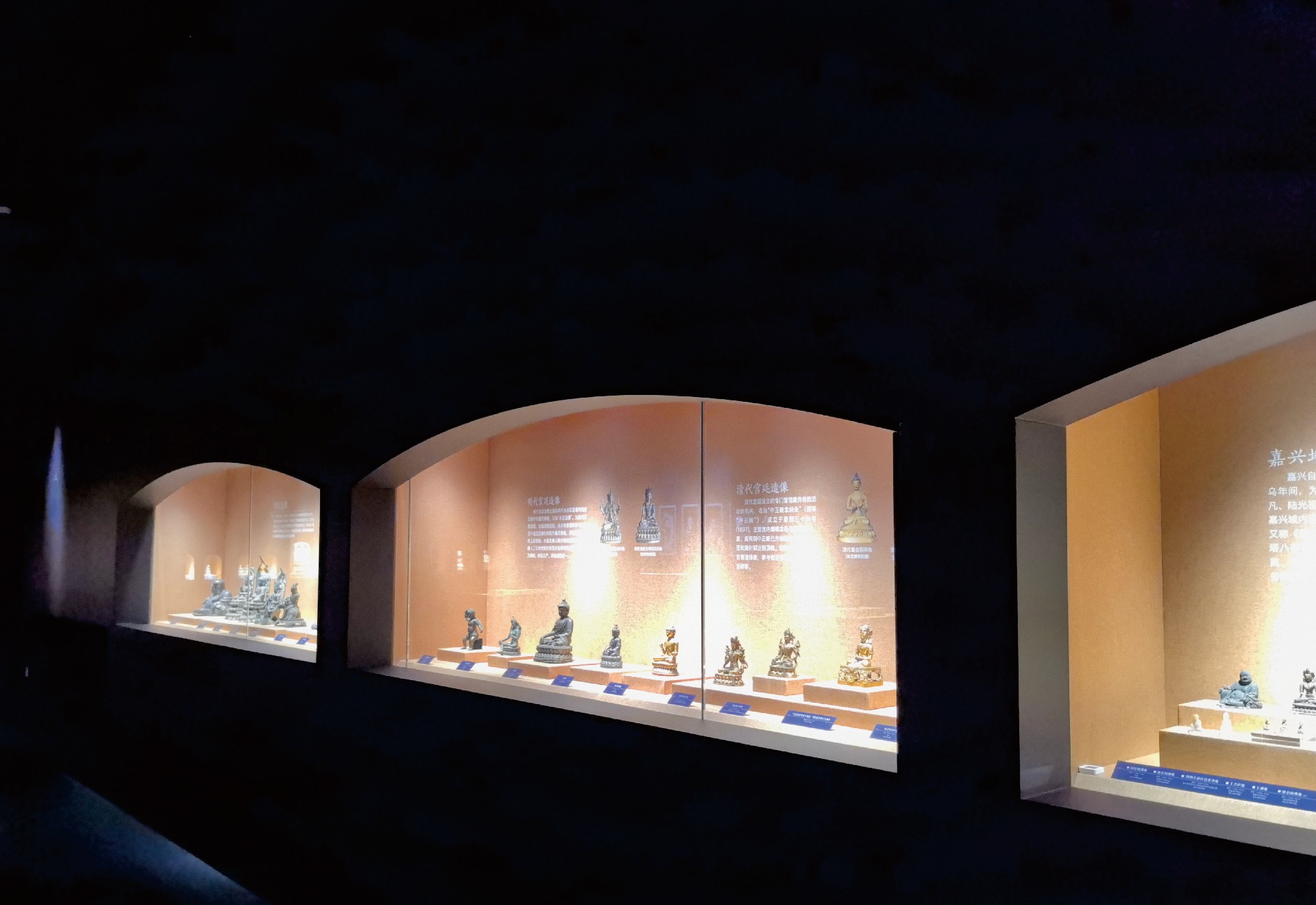

The production of court statues was mainly concentrated in the Qing and Ming dynasties. The religious policy of the Ming court strengthened the central government's governance of Tibet through feudalization and inheritance, and at the same time promoted the development of Tibetan Buddhism and the intermingling of Chinese and Tibetan art. The setting up of these statues began during the Yongle period and ended during the Xuande period, referring mainly to the Tibetan Buddhist statues made by the court during the two periods of the Ming Yongle and Xuande. These statues were mainly used to reward the upper-class Tibetan monks at that time, as part of the court's religious enlistment policy. In the Qing Dynasty, there were Kangxi and Qianlong's court statues, which reached a new height in art, forming a unique style of Chinese and Tibetan art intertwined. Palace statues not only have high artistic value, but also has important historical significance. They reflected the management policy and religious enlistment strategy of the central government of Tibet at that time, and promoted the exchange and integration of Chinese and Tibetan cultures. The management of Tibet by the central government of the Ming Dynasty implemented the national plan of “all sealing and building”, and the craftsmanship reflected the high level of skill and aesthetics at that time, which had a far-reaching influence on the development of art in the later generations.


